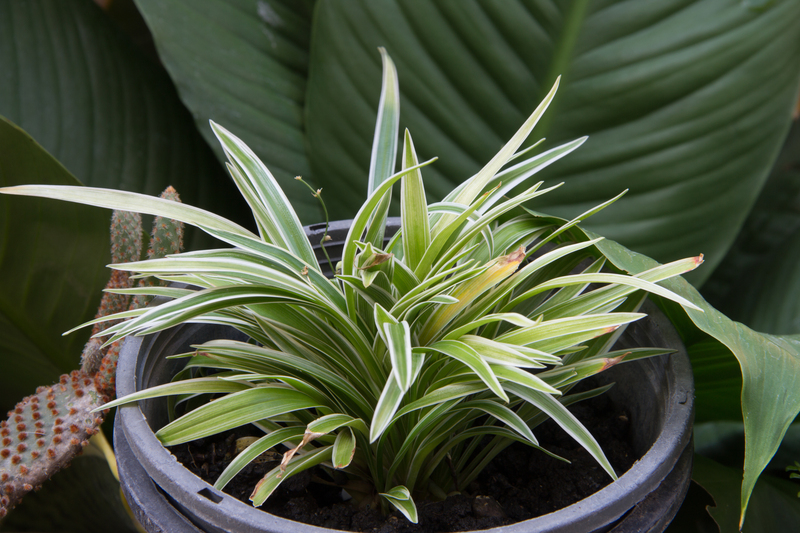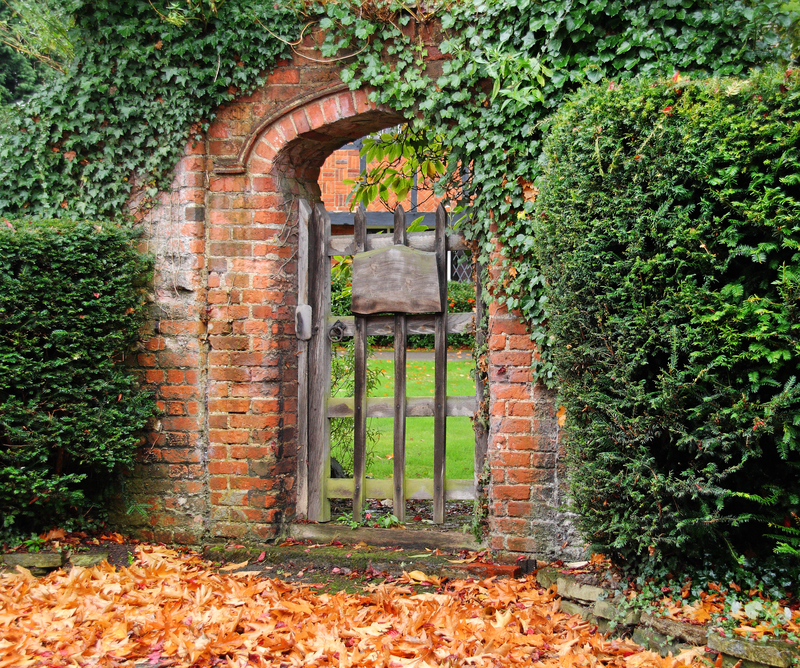Transform walls into gardens with vertical gardening
Posted on 26/08/2025
Transform Walls into Gardens with Vertical Gardening: The Ultimate Guide
Are you dreaming of a lush green oasis, but limited by space? Vertical gardening offers the perfect solution for transforming plain, dreary walls into stunning living gardens. In this comprehensive guide, we'll explore the concept, benefits, methods, and step-by-step instructions to help you turn walls into vibrant gardens using innovative vertical gardening techniques.

What is Vertical Gardening?
Vertical gardening is a gardening method that allows you to grow plants vertically, typically using structures like walls, trellises, and frames, instead of flat plots on the ground. This approach maximizes growing space, minimizes clutter, and opens up new possibilities for those with limited horizontal area.
Different Variations of the Vertical Garden
- Green walls (also called living walls or plant walls)
- Vertical planters attached to fences or building exteriors
- Pocket gardens made from fabric or recycled materials
- Trellises and lattice structures for climbing or vining plants
- Pallet gardens and hanging shelves
These vertical gardens are not only visually stunning, but also serve as natural air filters, sound insulators, and urban temperature regulators.
Why Choose Vertical Gardening?
Top Benefits of Transforming Walls Into Living Gardens
- Maximize small spaces: Vertical gardens allow you to grow more in less space - perfect for apartments, balconies, and urban homes.
- Enhance aesthetics: A plain wall becomes a breathtaking work of living art, instantly elevating your home or business's appearance.
- Improve air quality: Plants absorb toxins and release oxygen, creating a healthier indoor or outdoor environment.
- Insulate buildings: Living walls act as natural insulation, reducing heat in summer and retaining warmth in winter.
- Boost privacy: Vertical garden walls can act as charming privacy screens or natural barriers from neighbors and street view.
- Promote biodiversity: Providing habitats for pollinators and beneficial insects helps restore ecological balance in city spaces.
- Reduce noise pollution: The dense foliage helps to absorb and block unwanted noise.
Transforming walls into vertical gardens is more than a trend - it's a holistic approach to modern gardening that blends style, sustainability, and utility.
Choosing the Perfect Wall for Your Vertical Garden
Not all walls are equal when it comes to creating a vertical garden. Consider these factors before starting your green wall:
- Sunlight Exposure: Assess the amount of sunlight your chosen wall receives. Most edible and flowering plants require 4-6 hours of direct sunlight daily, while ferns or mosses thrive in shadier areas.
- Structural Integrity: Evaluate whether the wall can safely support the additional weight of soil, plants, and watered planting systems.
- Accessibility for Care: Your wall should be easy to access for regular watering, pruning, and harvesting.
- Visibility: Transform an eye-sore or unused area into an attention-grabbing focal point.
Ideal Places to Create a Vertical Garden
- Home facades and garden walls
- Balcony railings and apartment exteriors
- Interior feature walls and entryways
- Office, cafe, and shop walls
- Fence lines and backyard sheds
Best Plants for Vertical Gardening
The success of your wall garden depends on plant choice. Here are some top recommendations for vertical garden plants:
- Foliage plants: Ferns, ivy, philodendrons, golden pothos, spider plants
- Flowering varieties: Begonias, impatiens, fuchsia, petunias, nasturtium
- Edibles: Strawberries, cherry tomatoes, lettuce, kale, basil, oregano, mint
- Cacti and succulents: Ideal for minimal water environments
- Mosses and lichens: Perfect for shaded spots or modern, minimalist designs
Tip: For beginners, choose plants with similar water, light, and soil requirements to simplify care and maintenance.
Methods for Building a Vertical Garden on Walls
1. Modular Living Wall Systems
- Prefabricated panels or pockets that attach directly to walls
- Features integrated irrigation and drainage systems
- Appearance: Modern, seamless, and elegant
2. Repurposed Materials
- Pallet gardens: Use wooden pallets lined with landscape fabric as vertical planters
- Plastic bottles or old gutters: Cut and mount in rows for herbs and small flowers
- Shoe organizers: Sturdy fabric versions make charming mini pocket gardens
3. DIY Planter Systems
- Wall-mounted pots and racks: Attach rows of pots or planters to sturdy railings or shelves
- Trellis and wire mesh: Secure mesh or lattices for vining plants
4. Hydroponic Living Walls
- A soilless system using nutrient-rich water solutions
- Advanced option for tech-savvy or commercial installations
- Fast growth rate, precision feeding, minimal mess
Whether you choose a simple DIY method or a professional modular system, vertical gardening can transform any wall into a flourishing green landscape.
Step-by-Step: How to Create Your Own Vertical Wall Garden
Step 1: Plan Your Design
- Sketch out your wall space and measure dimensions.
- Decide on materials (e.g., modular kits, recycled containers, pallets).
- Choose your plant varieties based on sun, shade, and available space.
Step 2: Prepare the Wall
- Clean the wall thoroughly.
- Waterproof the surface using a plastic barrier if mounting directly.
- Install support structures (frames, hooks, railings) to handle full weight.
Step 3: Install the Planting System
- Hang or mount your modular panels, pockets, or planters securely.
- Ensure proper spacing for sunlight and air circulation.
- Arrange irrigation or drip systems if desired.
Step 4: Plant Your Selection
- Fill planters or pockets with quality potting soil mixed with compost.
- Moisten the soil and introduce your chosen plants, arranging to maximize visual impact.
- Water thoroughly to help roots establish.
Step 5: Maintain Your Vertical Garden
- Water regularly - frequency depends on plant type and system.
- Feed once a month during growing seasons with organic fertilizer.
- Prune dead leaves and rotate plants for even growth.
With these detailed steps, you can turn any ordinary wall into a lush and beautiful vertical garden in just a weekend.
Design Ideas for Stunning Vertical Gardens
- Rainbow Effect: Arrange plants by color for a striking gradient or rainbow appearance.
- Textural Play: Mix ferns, succulents, and leafy vines for eye-catching texture contrasts.
- Edible Living Wall: Blend kitchen herbs, compact vegetables, and edible flowers.
- Modern Minimalist: Uniform rows of the same variety for a sleek, contemporary look.
Common Challenges and Solutions in Wall-Based Gardening
- Drying out: Vertical gardens can dry quickly. Use soil-retentive mixes and consider automatic drip irrigation systems.
- Pests: Regularly inspect for bugs and diseases. Use organic deterrents or introduce beneficial insects.
- Plant turnover: Replace annuals or poorly performing plants seasonally for year-round beauty.
- Weight issues: Ensure wall structures are reinforced to avoid accidents.
Frequently Asked Questions about Vertical Wall Gardens
-
Can any wall support a vertical garden?
No. Assess the structure for strength and moisture resistance. Fragile walls may need additional reinforcement. -
Do vertical gardens attract insects?
They may attract beneficial insects and occasional pests. Select pest-resistant plants and maintain cleanliness. -
What is the cost to create a vertical garden?
DIY systems can be built for under $100, but high-end modular installations may cost much more. -
Do plants survive winter in a vertical wall?
Choose hardy perennials or move portable systems indoors during extreme cold.

Conclusion: Turn Your Walls into Gardens Today
Vertical gardening offers a revolutionary approach to urban greening and home beautification. By transforming barren walls into thriving vertical gardens, you can maximize limited space, improve air quality, foster sustainability, and unleash your creativity. Start simple with a DIY vertical garden project, or invest in a professional living wall for a bold, eco-friendly statement.
No matter your skill level, budget, or available space, you can transform any vertical surface into a lush and beautiful garden environment. Ready to turn your walls into gardens? Embrace the possibilities of vertical gardening today!
Quick Summary: Vertical Gardening - The Key to Greener Walls
- Vertical gardening transforms walls into living gardens for homes, offices, and public spaces.
- Choose wall location, plant varieties, and system type for successful installation.
- Vertical wall gardens offer beauty, air purification, and insulation benefits.
- With a little planning and care, anyone can enjoy the lush appeal of a vertical garden.
Ready to get started? Let vertical gardening revolutionize your lifestyle and environment by transforming your ordinary walls into extraordinary gardens!



